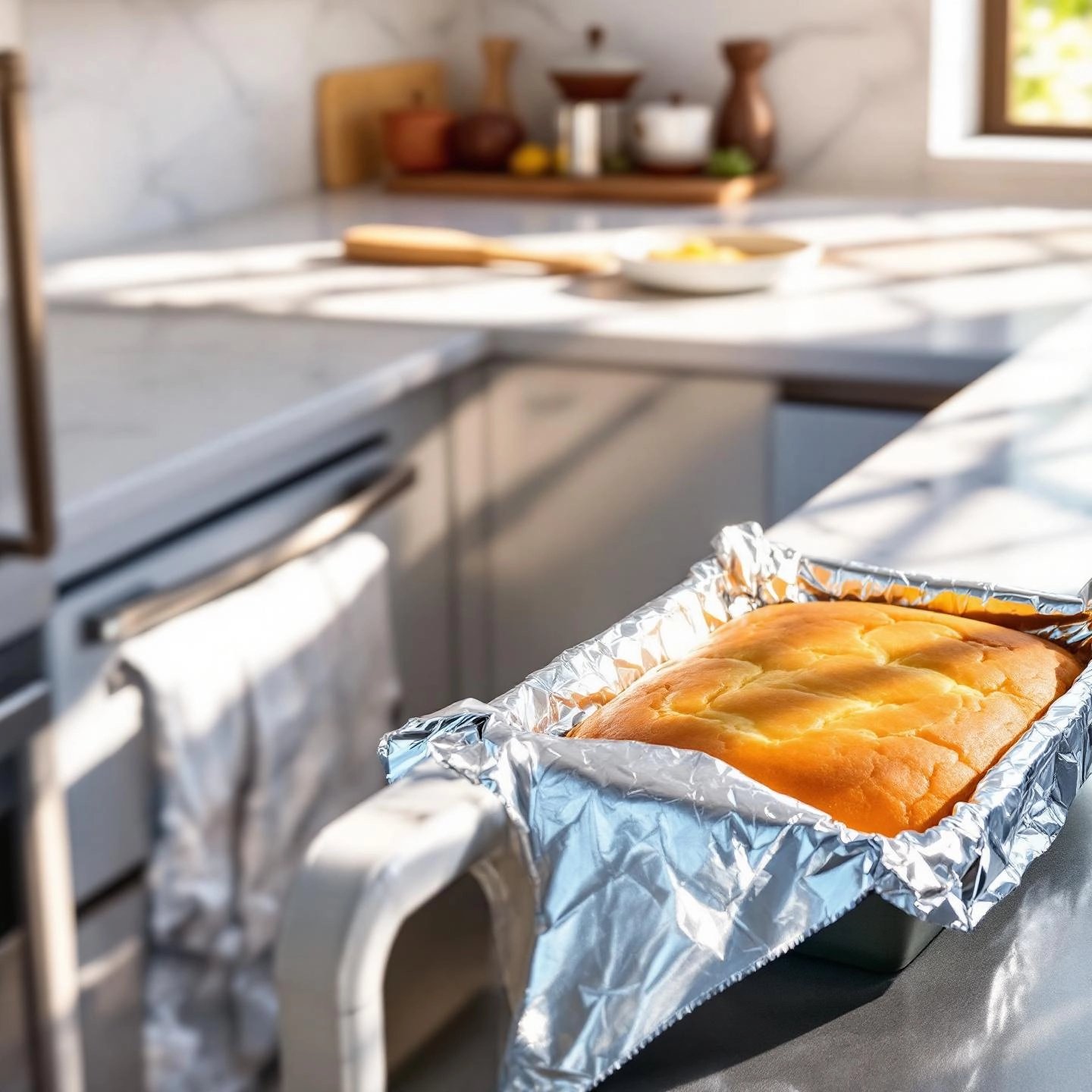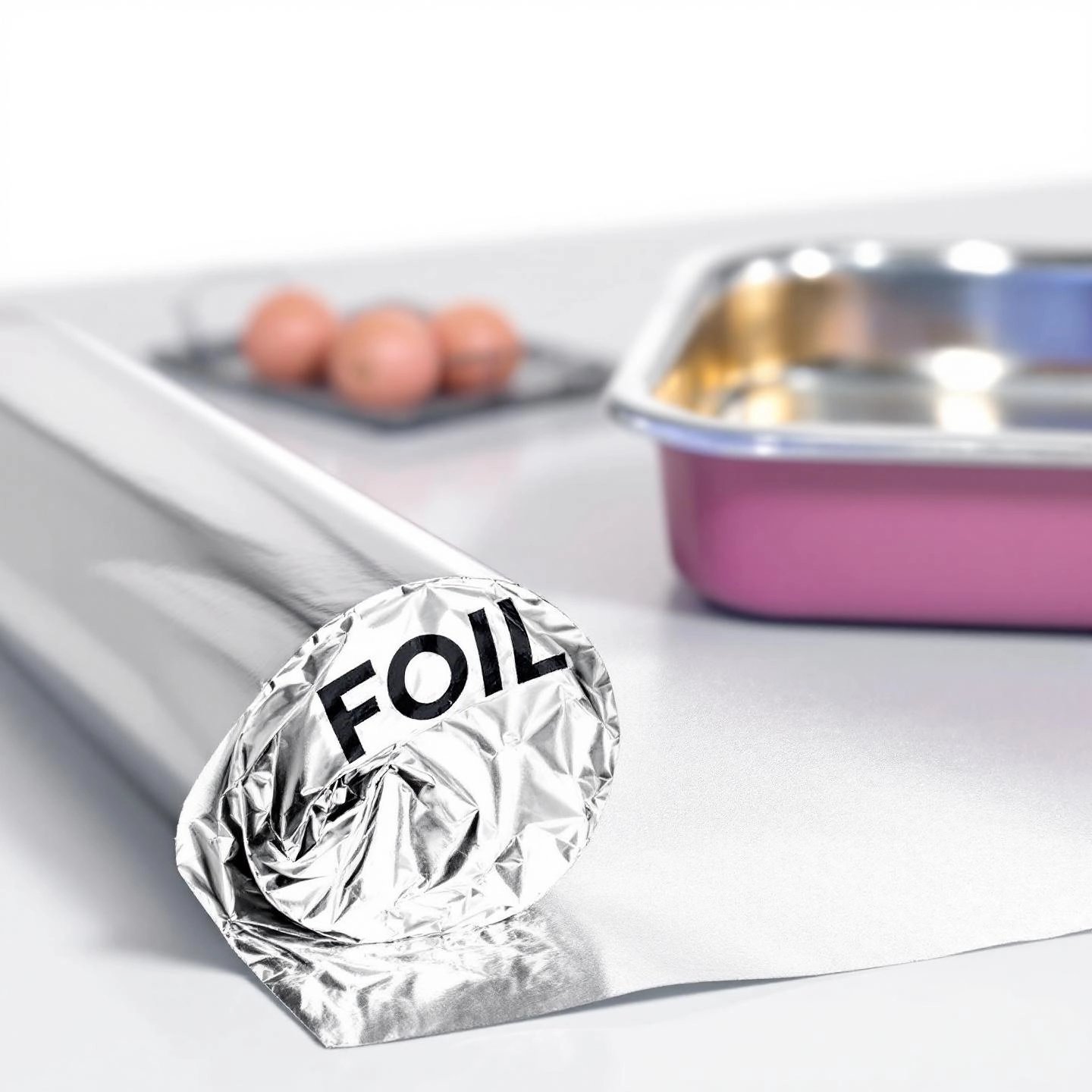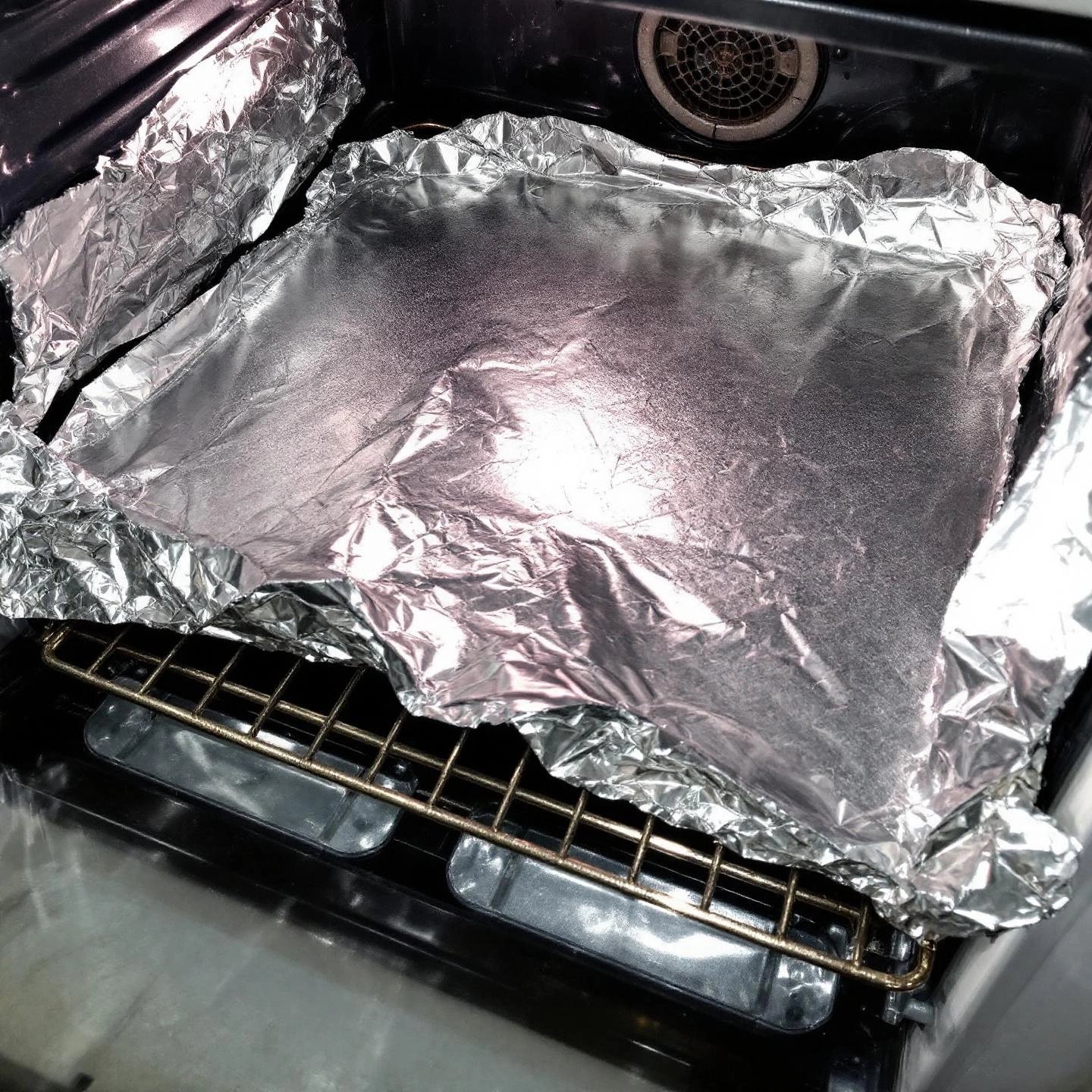
When you think about baking, roasting, or prepping meals, aluminum foil probably comes to mind as a go-to kitchen helper. From lining pans to wrapping leftovers, it’s a staple in almost every home. But here’s a common question many cooks ask: can aluminum foil go in the oven? And, more importantly, is it safe to put aluminum foil in the oven for all your favorite recipes?
The short answer is yes—aluminum foil can safely be used in most ovens for a wide range of cooking tasks. Its ability to withstand high temperatures and reflect heat makes it a popular choice for lining baking sheets, covering casseroles, or wrapping foods to lock in moisture and flavor. In fact, both home cooks and culinary professionals rely on foil because it helps food cook evenly and makes cleanup a breeze.
However, before you reach for that roll of foil, it’s important to know that there are some crucial safety guidelines you should follow. Used incorrectly, foil can cause uneven cooking, damage your oven, or even pose a safety risk. For example, lining the oven floor with foil or letting it touch heating elements is a big no-no, as it can disrupt heat flow and potentially harm your appliance (Whirlpool).
In this complete safety guide, you’ll discover the science behind aluminum foil, its best uses, and the mistakes to avoid. Whether you’re a baking enthusiast or just want to simplify cleanup, understanding how to use foil properly will help you get the best results—safely and confidently.

Ever wondered why aluminum foil is such a kitchen staple—or what makes it so reliable in the oven? Let’s break down the basics, from its composition to how it handles heat, so you can use it with confidence for all your baking and roasting needs.
Aluminum foil is essentially a very thin sheet of rolled aluminum, sometimes alloyed for extra strength. The thickness of commercial foil ranges from as thin as 0.0065 mm (6.5 microns) up to 0.2 mm. Anything thicker than 0.2 mm is considered aluminum sheet, not foil (AZoM). This ultra-thin metal is lightweight, flexible, and easy to mold around food or baking pans, making it incredibly versatile in the kitchen.
If you’ve ever paused to wonder which side of the foil should face up, you’re not alone. The difference between the shiny and dull sides is simply a result of the manufacturing process—two sheets are rolled together, so one side ends up shinier where it contacts the rollers, while the other is duller. But here’s the good news: for standard and heavy-duty foil, it doesn’t matter which side you use. Both sides conduct heat equally well, and the minor difference in reflectivity is negligible for most cooking tasks (EatingWell).
In short, aluminum foil’s unique combination of strength, heat resistance, and food safety is why it’s trusted by home cooks and professionals alike. Next, let’s explore the smartest ways to use foil in your oven for the best results.
When considering how to use aluminum foil in the oven, it helps to think about the everyday challenges you face in the kitchen. Ever struggled with sticky casseroles, over-browned desserts, or a mess left behind on your favorite baking sheet? That’s where aluminum foil truly shines—offering solutions that are both practical and easy to master.
Imagine prepping a weeknight meal or baking for a crowd. Here’s a quick checklist of the best ways to cook with aluminum foil—each designed to save you time and help your food turn out just right:
By mastering these safe and smart uses, you can make your oven work harder for you—while avoiding common kitchen headaches. Next, let’s look at some critical mistakes to avoid so you can use foil with total confidence.

When it comes to using foil in your oven, a few simple missteps can lead to big problems. Have you ever wondered, "Can aluminum foil catch fire in the oven?" or worried about damaging your appliance? While foil is generally safe, ignoring essential safety rules can put both your food and your oven at risk. Let’s break down the most common mistakes—and how to steer clear of them for safe, worry-free cooking.
Here’s a practical checklist of critical mistakes to avoid when using aluminum foil in the oven:
Key takeaway: For the best aluminum foil in oven safety, always follow your oven manufacturer’s guidelines and use foil only as directed. When in doubt, less is more—use just enough foil to get the job done, and never block airflow or cover heating elements.
Imagine using a thin, low-grade foil that tears easily or melts at lower-than-expected temperatures. The quality of your foil—and all oven-safe materials—directly impacts your safety and cooking results. That’s why, in both home kitchens and industrial settings, choosing high-quality, precisely engineered aluminum is crucial for consistent performance and peace of mind.
Companies like Shengxin Aluminum bring this commitment to quality to a larger scale, manufacturing high-grade industrial aluminum profiles that meet strict safety and performance standards. Whether you’re baking at home or designing for demanding environments, reliable materials form the foundation of safe, successful outcomes.
Now that you know which mistakes to avoid, let’s explore how aluminum foil can actually enhance your cooking—affecting everything from cooking times to the final texture of your food.
When you pull out a roll of foil for your next meal, have you ever wondered—does aluminum foil affect cooking time? Or, more importantly, how does it change the way your food turns out? Let’s break down the science and practical effects, so you can get the best aluminum foil cooking results every time.
Aluminum foil is a powerful heat conductor and reflector. This means it doesn’t just withstand oven temperatures—it actively shapes how food cooks. Here’s how:
Ever notice how tightly wrapping a casserole or veggies in foil keeps them moist? That’s because foil forms a barrier, trapping steam and creating a mini-oven environment inside your dish. This technique is perfect for:
While foil can be a game-changer, improper use may lead to less-than-ideal results:
By understanding how foil interacts with heat, steam, and airflow, you’ll be able to tailor your oven techniques for the texture and doneness you want. Next, we’ll explore how these principles change depending on the type of oven you’re using, so you can adapt your approach for every baking or roasting task.

Ever wondered if the rules for using aluminum foil change depending on your oven? When you switch between a conventional oven, a convection oven, or a toaster oven, the way heat moves—and the risks involved—can shift dramatically. Let’s break down what you need to know to stay safe and get the best results in any kitchen.
Picture this: you’re lining a baking sheet in your big oven, then the next day you’re covering a dish in your compact toaster oven. While aluminum foil is generally oven-safe, the best practices for aluminum foil in convection ovens or toaster ovens aren’t always the same as in standard electric or gas ovens. Here’s a side-by-side look at what matters most:
| Oven Type | Key Considerations | Foil Safety Tips |
|---|---|---|
| Conventional (Electric/Gas) |
|
|
| Convection Oven |
|
|
| Toaster Oven |
|
|
Have you ever noticed that even two ovens from the same brand might have different rules for foil? That’s because oven designs, airflow, and safety features can vary widely. Always check your appliance manual or the manufacturer’s website for their specific recommendations on foil use. For toaster ovens in particular, guidelines can differ not just by brand, but by model (Toaster Oven Love).
When in doubt, reach out to the manufacturer’s support team or look up your model number online. Following these details isn’t just about avoiding mess—it’s about protecting your appliance and your safety.
Just as attention to detail is vital in the kitchen, it’s also the foundation of safe, high-performance aluminum manufacturing. Companies like Shengxin Aluminum set the standard for precision engineering—ensuring that every aluminum profile meets strict safety and quality benchmarks. This same commitment to excellence is what you should bring to your own kitchen: follow instructions, use high-quality materials, and never cut corners with safety.
Understanding the unique considerations for each oven type lets you use foil confidently—whether you’re prepping a family meal or baking up a storm in your toaster oven. Next, let’s explore some additional health and food safety considerations when using aluminum foil in your cooking routine.
When you’re prepping a meal, you might pause and wonder: Is aluminum foil toxic in the oven? Or maybe you’ve heard stories about metals leaching into food and want to know if you should be concerned. Let’s break down the facts, so you can cook with confidence and make the best choices for your family’s health.
Here’s the simple answer: yes, a small amount of aluminum can transfer from foil to your food during oven cooking—especially at high temperatures or when cooking with certain ingredients. But how much leaches, and is it something to worry about?
Key takeaway: For most people, using aluminum foil in the oven is safe—especially when you avoid high-heat cooking with acidic or salty foods. Staying informed lets you enjoy the convenience of foil while protecting your health.
Now that you know how to use foil wisely and understand the health considerations, let’s wrap up with a summary of the top safety tips to keep your oven—and your meals—in great shape.
After exploring the ins and outs of using foil in your kitchen, you might still wonder: can aluminum foil go in the oven safely? The answer is yes—when you follow a few essential guidelines. Let’s recap the most important aluminum foil oven safety tips so you can cook with confidence and keep both your food and your oven in top shape.
By following these simple practices, you’ll notice that aluminum foil not only makes baking and roasting easier, but also keeps your kitchen cleaner and your results more consistent. Remember, safe use is all about respecting your oven’s design and the properties of the materials you choose.
Just as you look for quality in your kitchen tools, the same attention to detail is vital in larger-scale applications. In the world of industrial manufacturing, companies like Shengxin Aluminum set the standard for excellence—delivering high-quality aluminum profiles that meet demanding performance and safety requirements. Their commitment to precision and reliability mirrors what every home cook should expect from their own kitchen essentials.
So, next time you reach for the foil, do so with confidence—knowing you have the knowledge and tips to use it safely, effectively, and with great results.
Yes, using aluminum foil in the oven is generally safe for most cooking and baking tasks. It's important to avoid lining the oven floor, covering entire racks, or letting foil touch heating elements to prevent fire risks or appliance damage. Always follow your oven's manual for specific guidance.
Aluminum foil can safely be used in the oven at 400°F and even higher, as its melting point is much higher than typical oven temperatures. Just be sure to use foil correctly—lining pans or covering dishes—and avoid direct contact with heating elements.
A small amount of aluminum may transfer to food, especially when cooking acidic or salty dishes at high heat. For most people, this is not a health concern, but those with kidney issues or who want to minimize exposure can use alternatives like parchment paper for such recipes.
Never line the oven floor with foil, don't cover entire oven racks, and keep foil away from heating elements. Improper use can cause uneven cooking, fire hazards, or permanent oven damage. Always secure foil tightly, especially in convection or toaster ovens.
Yes, but extra care is needed. In convection ovens, secure foil to prevent it from blowing onto heating elements. For toaster ovens, always check the manufacturer’s instructions—never line crumb trays or oven walls with foil, as this can be a fire hazard.
 Інтернет-сервіс
Інтернет-сервіс 0086 136 3563 2360
0086 136 3563 2360 sales@sxalu.com
sales@sxalu.com +86 136 3563 2360
+86 136 3563 2360